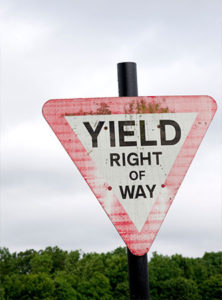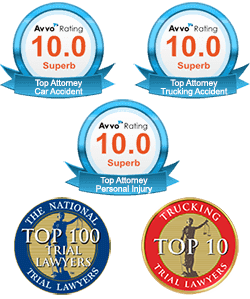 On October 11, the American Transportation Research Institute (ATRI) released a 2022 update to its Predicting Truck Crash Involvement study, derived from over 580,000 individual truck driver records. This update confirms ATRI’s long-established finding that there is a strong correlation between unsafe driving practices like failing to use turn signals, violating the right-of-way, and making unpredictable lane changes and subsequent crashes. As a truck accident law firm in dealing with these matters, let’s take a closer look at this report.
On October 11, the American Transportation Research Institute (ATRI) released a 2022 update to its Predicting Truck Crash Involvement study, derived from over 580,000 individual truck driver records. This update confirms ATRI’s long-established finding that there is a strong correlation between unsafe driving practices like failing to use turn signals, violating the right-of-way, and making unpredictable lane changes and subsequent crashes. As a truck accident law firm in dealing with these matters, let’s take a closer look at this report.
The Most Dangerous Behaviors That Lead to Truck Accidents
According to the just released ATRI report, past driver behaviors have been consistently reliable predictors of crash involvement, with some offenses having greater significance than others. These consist of:
- refusal to yield the right-of-way
- a conviction for ineffective or inappropriate use of turn signals
- a conviction for an illegal or unpredictable lane change
- reckless driving offense
- a previous crash
When looking at each of these actions separately, ATRI discovered that failing to yield the right-of-way raised the risk of a collision by 141%, up roughly 40% from the last report, released in 2018. Conviction for failure to utilize or incorrect signaling raised the chance of a crash by 116%, or 41.5%, between 2018 and 2022. The likelihood of a crash increased by 104% as a result of irresponsible driving, compared to a decrease of 8.8% between 2018 and 2022.
In general, the analysis discovered that drivers who had once been in an accident are 113% more likely to be in one again, an increase of 28.4% over the previous study.
Five of the violations and convictions that raised the chance of future crashes by more than 100% were among the more than 25 that ATRI’s investigation found. A truck driver’s likelihood of experiencing another crash rose by 113% simply by having one in the past, which is 28.4% greater than what was discovered in earlier ATRI Crash Predictor reports.
Dan Horvath, vice president of safety policy at the American Trucking Association said that one of the most crucial things the trucking business may have is a science-based model for forecasting crashes. Carriers can focus on critical truck driver behaviors thanks to ATRI’s crash predictor study and there has never been a better time to have this information, he said.
Revealing facts about age and gender in trucking
The average age of truckers is found to have increased from 43 in 2005 to 46 in 2022, according to the latest ATRI survey, which sheds light on the issue of an aging driver population.
The safety of male and female drivers is also discussed again in the study, with female drivers being safer drivers than their male equivalent. The number of women operating trucks is increasing, but the latest ATRI research estimates that they make up fewer than 7% of all drivers, whereas other studies have their percentage as high as 12%. In the United States, women make up slightly more than 50% of the population.
A remarkable difference between the proportion of female truck drivers overall (6.7%) and their substantially lower representation in driver inspections (2.7%) is also documented by the latest ATRI investigation.
According to the latest ATRI Crash Predictor study, men were 76% more likely to be cited for driving without a seatbelt, 57% more likely to be found guilty of driving too fast for the road conditions, 19% more likely to be found guilty of exceeding the posted speed limit by more than 15 miles per hour, and 14% more likely to be in a collision.
The safest states to operate in based on statistical study
The safest states to travel through were also ranked in the research using statistical analysis of the correlation between traffic enforcement and the likelihood of an accident.
The top-ranked state was Washington, followed by Massachusetts, Indiana, New Mexico, Arizona, and Indiana. To round out the top ten, Georgia, Pennsylvania, Illinois, California, and Michigan were listed.
ATRI further emphasized that in terms of enhancing highway safety, traffic enforcement inspections are frequently more effective than roadside checks. According to the organization, roadside vehicle inspections are inclined to be roughly 3.1 times more effective from a safety point of view than traffic enforcement inspections. Only North Dakota, Vermont, Wyoming, and Alaska experienced a drop in truck-related accidents between 2018 and 2022, according to the report.
According to ATRI, it would be beneficial for states to increase the number of traffic enforcement inspections to reduce the number of crashes. Mainly, this is supported by the data, with the exception of ten states where traffic enforcement inspections decreased.
For instance, Connecticut experienced a 13.5% increase in accidents during that time while seeing an 11.3% decline in traffic enforcement inspections. Maryland saw a little than 1% reduction in inspections but a 69% rise in accidents.
The research emphasized the need of having positive working relationships between state trucking associations and law enforcement in order to reduce accidents and make roadways safer.
Contact Us
Serious injuries sustained in truck accidents can sometimes be both long-standing and permanent. Flick Law Firm understands all the physical, medical, emotional, and financial difficulties you go through; thus, you may rely on us to defend your rights and seek restitution from the guilty parties.
Call us at (816) 221-0501 for assistance in identifying the party responsible for your accident and securing the fair compensation you deserve for your losses.




